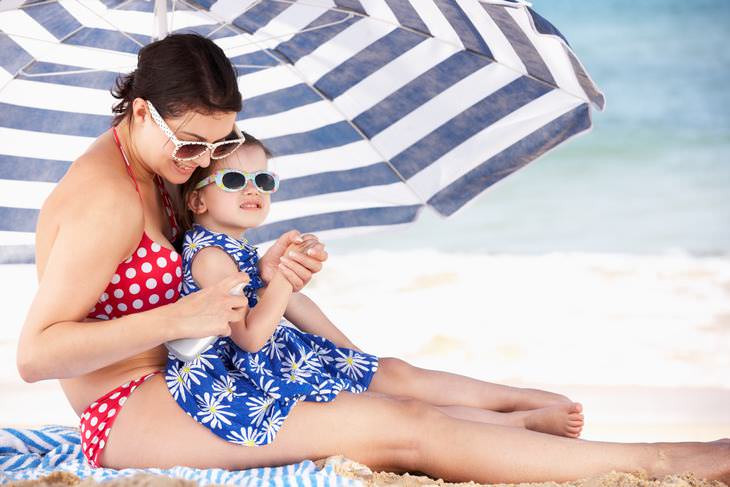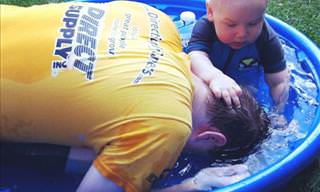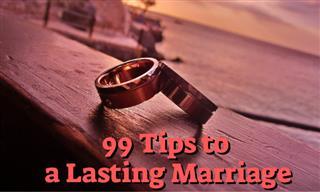



These Easy Guides Will Turn Any Mom into Supermom!
Being a parent is the hardest challenge in the world. Perhaps these nifty video guides will help!

7 Ways to Develop a Child's Executive Functions
What are these executive functions and how can you help your child develop them? You will find all of this in the following guide.

ARFID: An Undiagnosed Eating Disorder?
In the ever-evolving realm of psychological disorders, Avoidant Restrictive Food Intake Disorder (ARFID) has emerged as a puzzling newcomer in recent years.

This Simple 2-Minute Massage Can Ease Foot Pain
Suffer from foot pain? This 2-minute massage will help ease symptoms.

How to Tell Your Children You Have Cancer
What's the right way to tell your children you have cancer, and are there situations where you shouldn't?

7 Ways Persistent Coughing Hurts Our Body
Don't let a cough go unnoticed. This is how it can harm your body.

Does Your Child or Grandchild Sit in This Dangerous Pose?
There is a worrying argument that one of the most common kneeling poses that children make is damaging their health.

Children of the Past: Historical Photos of Kids Having Fun
19 Nostalgic photos of children having fun playing outside.

10 Worst Things to Say When Talking to Your Grandchildren
In this article, we will look at some of the things you should never say to your grandchildren.
 2:41
2:41
Celebrating a Bond Between Grandmother and Grandson...
This short video is a gentle and beautiful example of loving your family.

Darling Child, Here are 8 ‘Sorrys’ I Meant to Tell You
Dear child, I love you, I always have and I always will, but there are many things I should apologize for. Here are 8 of my 'sorrys'.

Couples Who Stay Together Forever Have 19 Things In Common
Although it looks like everlasting love is but a mere stroke of luck, there are 19 secrets that are shared by all couples that get to experience it...

Should Children Have Caffeine? Here's Our Complete Answer
This article asks: should kids have caffeine, and how much is too much?

16 Lovely Quotes That Celebrate the Brotherly Bond
Having a brother is truly a blessing. These quotes will help you celebrate and appreciate them.

These Funny Photos Have a Lot to Say About Being a Parent
The 17 parents in the following pictures should be awarded the best parent award, if only for the way they deal with their silly kids!

The Good and Bad White Lies in a Relationship
Four scenarios where it is acceptable to tell a white lie and 4 in which it is not permissible under any circumstances.

For a Divorce-Proof Marriage These Tips Are All You Need
Read these words of advice carefully, and write them on your heart!

Never Give a Child Under the Age of 4 These Foods!
These foods pose the biggest choking risk to children under the age of 4.

How to Be a Very Good Grandparent: 28 Foolproof Steps
There's plenty of advice out there for parenting, but everyone assumes grandparenting is too simple to be explained - how wrong they are!

Nine Couples Games that Can Strengthen Relationships
Each game is designed to make you a more loving and understanding couple, whether you are just starting out or have been married for years.

Guide: The 4 Types of Dyslexia in Children
Every parent should get to know this subject beyond the superficial level, and also learn how to identify dyslexia in their children.

What Life Looks Like for British Royal Babies
Discover the cool and surprising facts about the Royal family's babies, the only babies in the world who are given passports at birth.

How to Stop a Crying Baby in Just a Few Seconds
There is nothing worse than a baby that just won't stop crying. Well, thanks to Dr. Hamilton, this problem could now be a thing of the past!
 3:26
3:26
9 Ways to Help Kids Study Pleasurably, Easily & Memorably
Studying is one of the things people don't often enjoy. That is because they haven't been taught how to study. Here are 9 scientifically proven tips.

This Short Tale Reminds Us of a Person’s True Worth...
A short story that will remind you what a person's true worth is...
 3:01
3:01
The Speech EVERY Generation Should Hear...
Jack Webb Dragnet giving one of his most compelling speeches to youngsters complaining about the state of the country.

A Few Things About Child Obesity We All Need to Know
What causes childhood obesity, why is it getting more common, and what can be done about it?

Are These Schools the Most Unusual In the Entire World?
Many of us were educated in traditional classrooms, but the same cannot be said for the students at these 14 highly-unusual schools. Learn about them today.

WARNING: Don't Let Children Play With These Toys
Today there is a large selection of toys, and although they should be fun some may be real life-threatening, such as those on this list,

Husband Guide: How to Make Your Wife Fall in Love Again
Guide: how to show love again in simple ways and how to make your wife fall in love with you again.

7 Ways to Encourage Executive Development in Children
This guide will provide you with the information you need to help your child develop these essential functions.

How to Stop the Cycle of Guilt Between Generations
Dear Parents, guilt-tripping your kids can seriously harm your relationship.

How to Talk to Your Children About War & Conflict
As parents, how should you explain to your children about war? Here’s a guide that draws on expert opinions and research to help.

8 Signs It's Time to Sever Ties From a Family Member
Sometimes, it’s important to sever ties with a family member who has been nothing but toxic to you.

Remember This 6-Letter Phrase to Mend Passive Aggression
Emotional intelligence experts swear by this one simple 6-phrase to stop passive aggression in its tracks.

7 Ways to Develop a Child's Executive Functions
What are these executive functions and how can you help your child develop them? You will find all of this in the following guide.

8 Methods to Help Children or Adults Swallow Their Pills
In this article, you'll learn 8 methods of taking pills that'll make it easier on kids or adults having difficulties.

This Mother's Letter to Her Daughter Touched Me Deeply
There is nothing quite like a mother's love for her daughter, as this heartbreaking letter reveals. Prepare to be moved.

Guide: What to Feed a Baby at Every Age
Not all solid foods are suitable for every stage, which is why we have created a guide to help you feed your baby according to their age.

7 Ways to Combat Passive Aggressive Behavior
Common passive-aggressive behaviors and the recommended responses to situations you may encounter.

8 Food Combinations Perfect for a Growing Baby
Not only will these combinations put a smile on your little one's face, but they will also contribute significantly to their overall health.

Study: The Effect 40 Minutes Have on Children
Let's explore the details of this research and the opinions of other experts in this domain.
 2:14
2:14
As a Baby Grows, THIS is What It Will See...
It's no secret that babies see the world differently than the rest of us do, and this video will show you just what their visual development looks like.

How to Answer Children's Toughest Questions
Answer your children's burning questions and find new questions to keep the conversation going at every age.

There's a Reason Why Women are Sensitive...
When a woman cries, there's always a deeper reason behind it. Sometimes she just needs to let go what's inside of her. See this beautiful story.

9 Ways to Help Out Children With Anxiety
These nine strategies will enable you to support your children effectively, strengthening their mental well-being while helping them navigate their anxiety.
 3:49
3:49
This Father Has the Cutest Way of Handling His Baby...
This father will do anything to help his baby sleep...


